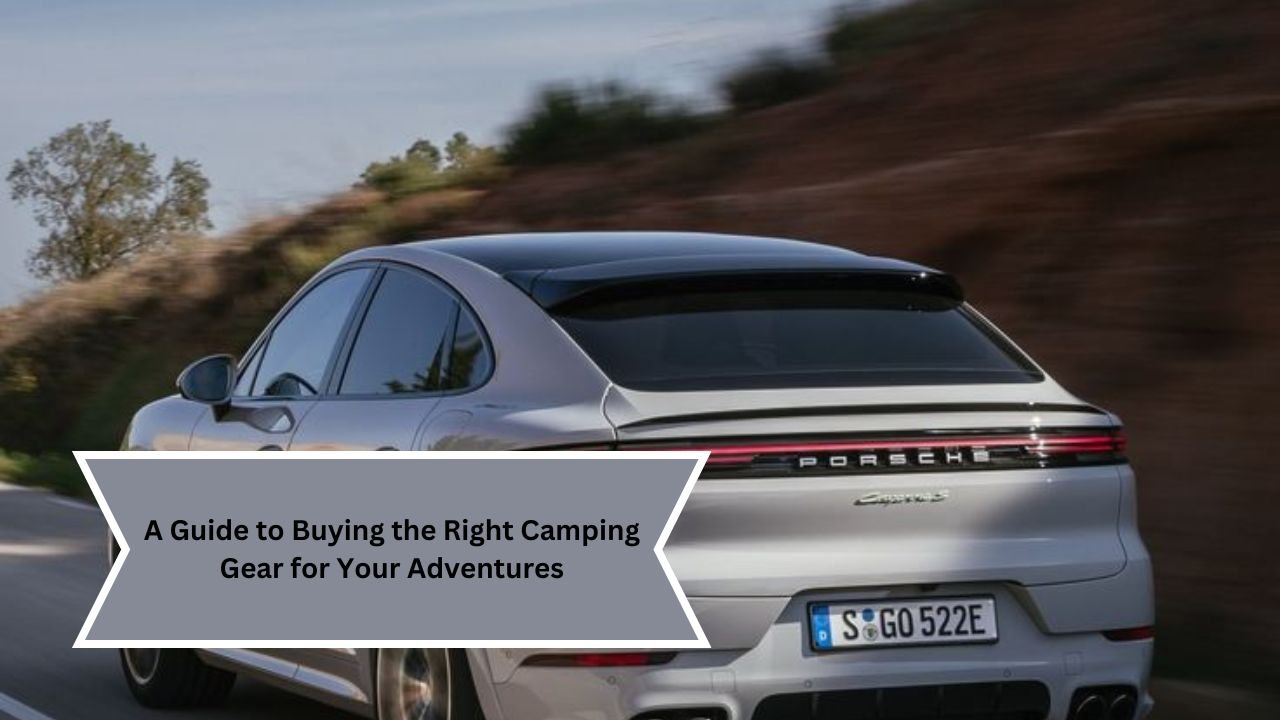Camping is a fantastic way to reconnect with nature, unwind from the stresses of daily life, and create lasting memories with friends and family. However, the success of your camping experience largely depends on the quality and appropriateness of your gear. With a plethora of options available, it can be overwhelming to choose the right equipment. This guide aims to simplify the process, providing you with essential tips and insights to ensure your next outdoor adventure is enjoyable and comfortable.
1. Assess Your Camping Style
Before purchasing gear, it’s crucial to identify your camping style. Are you a weekend warrior who prefers car camping, or do you enjoy backpacking and hiking to remote locations? Perhaps you’re interested in RV camping for a more luxurious experience. Understanding your style will help you prioritize your gear purchases and focus on what’s essential.
Car Camping vs. Backpacking
- Car Camping: This style allows for more gear flexibility since you’ll have your vehicle nearby. You can afford to carry larger items like spacious tents, comfortable sleeping bags, and kitchen equipment.
- Backpacking: If you plan to hike to your campsite, weight and size become critical. Lightweight and compact gear is essential, including a tent, sleeping bag, and cooking supplies.
2. Choose the Right Shelter
Your tent is one of the most important purchases you’ll make, as it provides protection and comfort. Here are a few factors to consider:
Size and Capacity
Tents come in various sizes, typically labeled as 2-person, 4-person, etc. When choosing a tent, consider the number of people who will be using it and whether you need extra space for gear. It’s often wise to select a tent with a larger capacity than your group size for added comfort.
Season Rating
Tents are usually rated for specific seasons:
- 3-Season Tents: Ideal for spring, summer, and fall camping. They can handle light snow but aren’t designed for extreme winter conditions.
- 4-Season Tents: Suitable for winter camping and harsher weather. They’re sturdier and better insulated.
Weight and Packability
If you’re backpacking, weight is crucial. Look for lightweight tents that are easy to set up and pack. Brands often provide specifications on weight and packed size, so make sure to check those details.
3. Selecting a Sleeping System
A good night’s sleep is vital for an enjoyable camping trip. Here’s how to choose the right sleeping gear:
Sleeping Bags
- Temperature Rating: Choose a sleeping bag rated for the temperatures you expect during your trip. A bag with a lower temperature rating provides more insulation for colder climates.
- Shape: Mummy bags are more efficient in retaining heat, while rectangular bags offer more room to move around.
- Insulation Type: Down insulation is lightweight and compressible but less effective when wet. Synthetic insulation performs well in damp conditions and is generally more affordable.
Sleeping Pads
A sleeping pad adds cushioning and insulation from the ground. Consider the following:
- R-Value: This indicates insulation effectiveness. A higher R-value is better for colder conditions.
- Type: Air pads are lightweight and comfortable, while foam pads are more durable and provide basic insulation.
4. Cooking and Food Storage
Cooking in the great outdoors can be a rewarding experience, but it requires the right gear. Here are some essentials to consider:
Cooking Equipment
- Camp Stove: Choose a compact, lightweight stove for backpacking, or opt for a larger model with multiple burners for car camping. Consider fuel type, availability, and ease of use.
- Cookware: Lightweight pots and pans are essential. Look for nesting sets that save space.
Food Storage
Proper food storage is vital for safety and preventing wildlife encounters. Consider:
- Coolers: For car camping, a good cooler can keep perishables fresh for days. Look for models with good insulation and ice retention.
- Bear Canisters: If you’re camping in bear country, these canisters are essential for safely storing food.
5. Clothing and Footwear
Dressing appropriately for the outdoors is crucial for comfort and safety. Here are key clothing items to consider:
Layering System
- Base Layer: Choose moisture-wicking materials to keep you dry.
- Insulation Layer: Fleece or down jackets provide warmth without bulk.
- Shell Layer: A waterproof and breathable jacket protects against rain and wind.
Footwear
Invest in quality footwear suitable for your camping style:
- Hiking Boots: Look for waterproof options with good ankle support for backpacking.
- Sandals: Comfortable sandals are great for around the campsite or short hikes.
6. Essential Accessories
Don’t overlook smaller accessories that can enhance your camping experience:
Lighting
- Headlamps: Hands-free lighting is essential for setting up camp after dark.
- Lanterns: These provide ambient light for cooking and socializing.
Navigation Tools
Even if you plan to stay in developed areas, having navigation tools can be beneficial:
- Maps and Compass: Always have a physical map and compass, even if you plan to use a GPS device.
- GPS Devices: Reliable and often more accurate than smartphone apps.
First Aid Kit
Accidents can happen, so a well-stocked first aid kit is essential. Ensure it contains band-aids, antiseptic wipes, pain relievers, and any personal medications.
7. Budgeting for Gear
Buying camping gear can become expensive, but it’s important to strike a balance between quality and cost. Here are a few tips:
- Prioritize: Invest in key items like a tent, sleeping bag, and cooking gear first. Other accessories can often be purchased later.
- Shop Sales: Look for seasonal sales, clearance items, or discounts from outdoor retailers.
- Consider Rentals: If you’re new to camping or don’t camp often, consider renting high-cost items like tents or backpacks.
Conclusion
Selecting the right camping gear is crucial for a successful outdoor adventure. By understanding your camping style, choosing appropriate shelter and sleeping systems, investing in cooking equipment, and dressing correctly, you can enhance your experience significantly. Always remember to prioritize quality and practicality over trends, and don’t hesitate to seek advice from experienced campers or outdoor specialists.
With the right gear in hand, you’re well on your way to creating unforgettable memories in the great outdoors. Happy camping!
| HOME | CLICK HERE |
| BUYING GUIDES | CLICK HERE |

